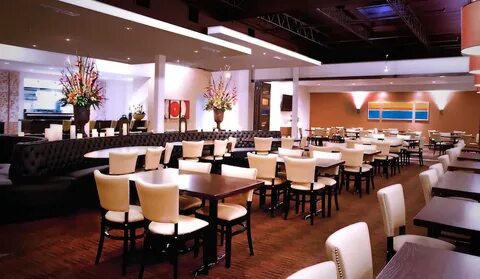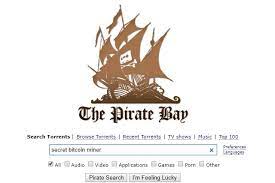How to write a restaurant business plan?

Do you want to start a restaurant?
Starting a restaurant without a proper business plan is like a ship without a compass.
I know you’ve thought all about opening a restaurant. But this is not enough. You need to write a detailed business plan for your restaurant.
A restaurant business plan is a framework that will help you launch and operate your restaurant in an organized and systematic manner. It contains everything like your restaurant menu design, employee details, market details, etc.
Most importantly, the business plan will also help you earn investment for your restaurant business.
This article will show you exactly how you can write a great business plan for your restaurant.
Why is it necessary to have a restaurant business plan?
Some new diners skip writing a business plan. This is because it can be a difficult and time-consuming task. But it is worth your time and effort. Here is the reason:
As a guide
A business plan is comparable to a road map that leads to the success of your restaurant. For example, it helps you determine how you will stand out from the rest of your competition. The business plan consists of important information such as financial analysis, market analysis, design, etc.
Also, writing a business plan may reveal any issues before you start your restaurant. Then, when you encounter a problem, you can use the document to help you find a suitable solution.
Crucial for investors
If you are considering an investment in your restaurant, a proper business plan is crucial. No investor will invest without a detailed business plan.
How to write a restaurant business plan
There can be a lot of ways to write a business plan. But I’ve listed the 10 main elements every restaurant plan should have.
The primary components of a restaurant business plan are as follows:
- Executive Summary
- Restaurant Description
- market analysis
- Your restaurant menu
- restaurant staff
- The location of your restaurant
- design your restaurant
- Marketing plan
- Restaurant operating plan
- financial analysis
Now I will discuss them in detail:
Executive Summary
Any business plan should begin with an executive summary. Note that this is not the only introduction section. Instead, it is a summary of your entire plan.
The main goal of an executive summary is to grab the reader’s attention. Generally, your readers will be your investors or other business partners.
Here are some elements of the executive summary: (Describe them briefly)
- The name of the restaurant, the kitchen, and the subject
- Your Restaurant Mission Statement
- How is it different from your competitors
- Brief forecast of costs
- How will you implement your plans?
- Expected return on investment
Describe your restaurant business
In this part, you describe in detail your restaurant business. First, write the name of your restaurant and then other important details like location, contacts, etc. Listed below are details that must be provided:
Restaurant type
(Restaurant concept) What type of restaurant do you plan to start in?
- Types of catering services: fast food, fast food, fine dining, etc.
- Food types: Chinese, Thai, Pizza, etc.
Restaurant owner information
In this section, you need to talk about yourself. List your work experience and any other accomplishments. You can also mention the achievements of your best team members.
Market analysis
This section describes your marketing strategy and your competitors. Here are some of the things this section should contain:
Analyze your customers
Answer these questions:
- Demographics of the site?
- Who will be your regular customers? (demographics)
- Age
- Income
- gender
- What do they like?
- Analyze your competitors
Here are some of the questions you need to address:
- List all the popular restaurants on your site.
- What restaurants are your direct competitors?
- (Let’s say you run a sushi restaurant. If there was another sushi restaurant in your area, that bar would be your direct competitor.)
- Are your competitors successful?
- Why should your customers choose your restaurant over other competitors?
Please note other details like food prices, opening hours, interior design, etc. Then think about how to stand out from your competition. This section is very important for investors as well.
For more info visit: https://www.mbplans.com/
C- Market analysis
Answer these questions:
- what is your specialty? For example, Thai food, sushi, etc.
- Are people interested in this kitchen? What is the market demand for your kitchen?
- What special offers do you have for your customers?
This section is not only important to investors. It will also help you create a plan for your restaurant’s success.
Your Restaurant Menu
The menu is another important part of your restaurant. You will need to design it carefully. A well-designed menu can significantly increase restaurant sales. It also helps promote profitable dishes and increase the profitability of your restaurant.
You may not have the best version of your list at this time. But it’s good to have a simple list.
At this time, you should have your restaurant logo ready as well. You can design the logo yourself using a free tool like Canva, but it’s best to order a logo from self-employed services like Fiverr. Then, use this logo on your restaurant menu.
The main item on your menu is the pricing of your dishes. However, setting exact prices for your dishes is generally not possible. Instead, you’ll need to run your restaurant to get the data and determine your exact prices.
Restaurant staff
In the previous section, we suggested that you jot down the restaurant owner’s qualifications and accomplishments. This section needs to write about the restaurant management team in detail. This will gain investor confidence.
You don’t need your entire staff to be ready at this time. However, you must have two important employees. Write about their work experience and achievements.
The location of your restaurant
The location is one of the most important factors for the restaurant’s success. Therefore, you should have already decided on a location for your restaurant.
First, do a market analysis and know the demographics of your customer. Then make sure that your site is suitable for your target customers.
For example, suppose you are planning to start an expensive restaurant. Of course, it would be better to choose a location where the residents or visitors are financially wealthy. However, it should also suit their taste and preferences.
This way, when writing this section, you can answer this question:
“Why is this location perfect for a restaurant?”
List all the details like cost, demographic, etc.
There are two main things to site analysis:
- Easy access to the site
- Supplementary business
Design your restaurant
The aesthetic design of your restaurant is not only important to your business partners and investors, but it is also important to delivering a great experience to your customers.
The interior design depends on the demographics of your customers and the type of your restaurant. For example, the theme of a fast-food restaurant should be completely different from the design of a fine dining restaurant.
Answer this question:
“What kind of design is right for my restaurant? Does this design appeal to my customers?”
You have to explain why you chose this design and why it is best for your restaurant.
Marketing plan
Marketing is essential for the expansion of any restaurant. You need to let people know about your business to make it work. So here are some questions that need answering:
- How will you market your restaurant?
- What advertising methods will you use?
- Are your advertising methods different from your competitors? How do?
This section is important to your investor. You also need to have a marketing plan for both before and after you open your restaurant. for example:
- How will you tell people about your restaurant before launching it?
- How will you attract customers after you start your restaurant?
Restaurant operating plan
How you will run your restaurant is another important part of your business. The operation of a restaurant is very complex and contains many ingredients.
The entire operation cannot be anticipated and documented before you start your own business. But, you can at least have an operational strategy before launching your restaurant. For example, you can write about how you will hire your employees and your technology.
Here are some of the clarifications that can be made in this section:
Find and hire employees
Finding the right staff for your restaurant can be challenging. So you must have a systematic way of hiring your restaurant employees.
List all the online job portals that you plan to use. Additionally, you can use newspaper advertisements and personal referrals to find qualified employees.
How will you choose the best employees?
Make a list of what is required for each job role, such as chef, cashier, manager, etc. Then, write down some interview questions that you can use to find your ideal employees.
Restaurant technology
One of the great advantages of starting a restaurant nowadays is that there are a lot of modern software programs that can make it easier to manage and operate a restaurant. A common example is restaurant POS software (also called restaurant management software ). This type of software can handle a lot of restaurant jobs like:
- Order Management
- Track your restaurant sales
- Accepting food orders online
Most restaurants use software nowadays. It is critical.
Financial analysis
The most important part of your business plan is the financial analysis section. You will often find your investors look first in the financial section when they see your business plan document.
It is good to hire a professional accountant to help you with this department and provide a realistic estimate. You will need to provide your accountant with some information such as:
- How many seats are in your restaurant?
- What is the expected bill for each customer? (Average)
- How many guests do you expect per day for your restaurant?
- Your food costs – ingredients costs and other costs.
Here are some useful things that your accountant needs to include in the financial analysis section:
Sales forecast
This should be a realistic estimate of your weekly, monthly, and yearly sales. You can estimate this forecast based on various factors such as restaurant seating capacity, delivery options, advertising budget, projected growth, location, and prices for your dishes.
Estimated total cost to start the restaurant
Any investor would like to know where their money is being spent. Also, estimating the cost will help your restaurant stay within budget. You must specify:
- The biggest expense for your restaurant
- Other small expenses
- The capital required to operate the restaurant (“Working Capital”)
Anticipate profits and losses
This section is very simple. But, first, you will need to write an estimate of the expected profit or loss in the first year.
Break-even analysis
The break-even point is when your business starts to generate profits. When the restaurant pays off all the loans, investments, and start-up costs, this is a very valuable metric for investors and business partners.
Here’s an equation to calculate this: (your accountant has to deal with this)
Break-even point = Total fixed costs / (Average revenue per customer – Average cost per customer)
This will tell investors when they can get a return on their investment.
Examples of restaurant business plans
We’d recommend visiting the Maven Business Plans website for some business plan examples.
Here are some examples:
- Fast Food Business Plan Template
- Luxury Dining Restaurant Business Template
- Example of a coffee shop business plan
Click to read more articles.




